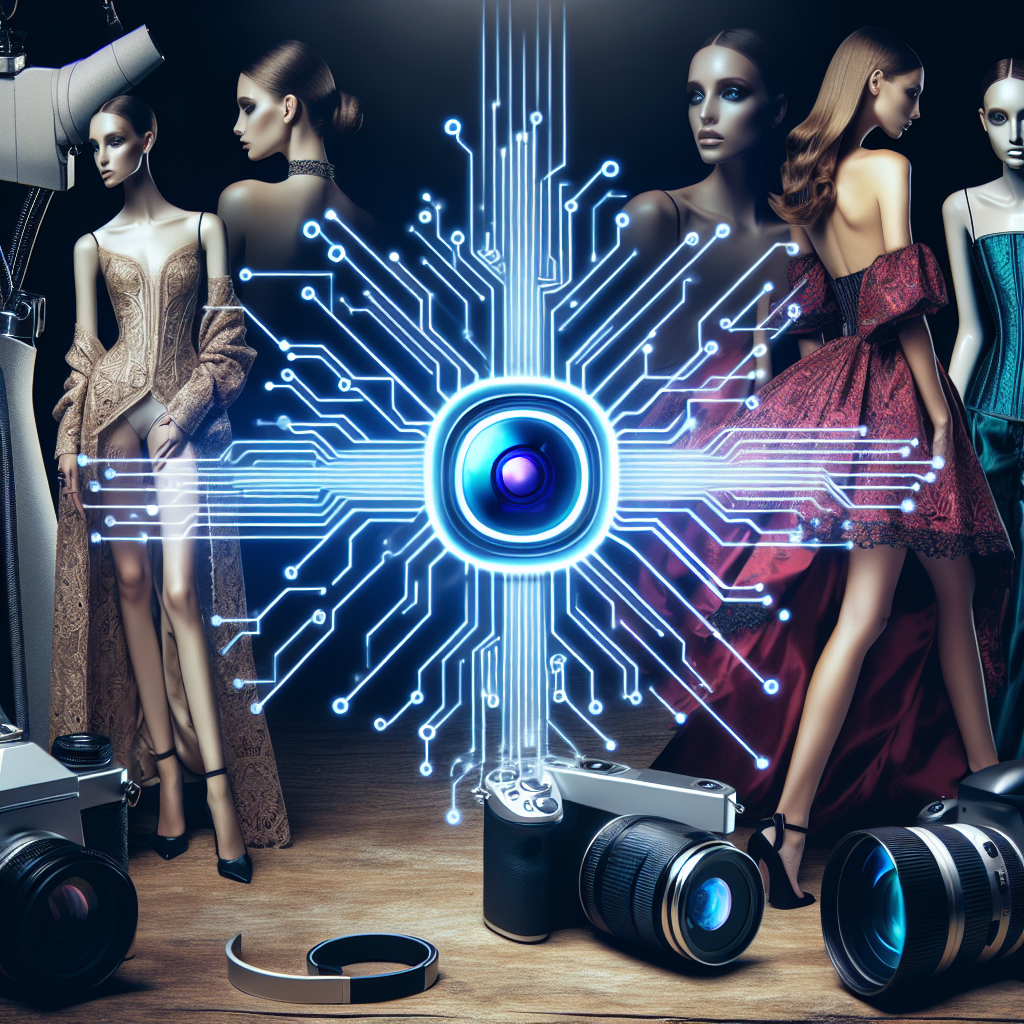The intersection of artificial intelligence and fashion photography is an exciting and rapidly evolving field that is poised to revolutionize the way we create and consume images. From automated photo editing tools to AI-powered virtual fashion shows, the possibilities are endless. In this article, we will explore the impact of AI on the future of fashion photography and discuss the potential benefits and challenges that come with this technology.
AI and Fashion Photography: A Match Made in Heaven
Artificial intelligence has already made significant strides in the fashion industry, from helping designers create more efficient workflows to improving the shopping experience for consumers. When it comes to fashion photography, AI is being used in a variety of ways to enhance the creative process and produce stunning images.
One of the most exciting applications of AI in fashion photography is the use of generative adversarial networks (GANs) to create realistic images of clothing and accessories. GANs are a type of neural network that consists of two competing models – a generator and a discriminator – that work together to produce high-quality images. By training these networks on a dataset of fashion images, AI can generate new, realistic images that are indistinguishable from those taken by a professional photographer.
AI is also being used to automate the process of editing and retouching photos, saving photographers time and ensuring a consistent look across a series of images. Tools like Adobe’s Sensei and Luminar AI use machine learning algorithms to analyze images and make intelligent edits, such as adjusting exposure, color balance, and composition. This allows photographers to focus on the creative aspects of their work, rather than spending hours in front of a computer screen tweaking individual pixels.
Another exciting development in AI-powered fashion photography is the rise of virtual fashion shows. With the advent of virtual reality and augmented reality technologies, designers are able to create immersive, interactive experiences that showcase their collections in a whole new way. AI can be used to create lifelike avatars of models, animate clothing to simulate movement, and even personalize the virtual show experience for each viewer based on their preferences.
Benefits of AI in Fashion Photography
There are several key benefits of using AI in fashion photography, including:
1. Efficiency: AI-powered tools can automate time-consuming tasks like editing and retouching, allowing photographers to focus on more creative aspects of their work.
2. Consistency: AI can ensure a consistent look and feel across a series of images, making it easier to maintain a cohesive visual identity for a brand.
3. Creativity: AI can help photographers experiment with new styles and techniques, pushing the boundaries of what is possible in fashion photography.
4. Accessibility: AI-powered tools are becoming more affordable and user-friendly, making them accessible to a wider range of photographers, regardless of their skill level.
Challenges of AI in Fashion Photography
While the benefits of AI in fashion photography are clear, there are also several challenges that come with integrating this technology into the creative process. Some of the key challenges include:
1. Ethical concerns: As AI becomes more sophisticated, there are concerns about the potential for misuse, such as creating unrealistic beauty standards or perpetuating harmful stereotypes.
2. Job displacement: As AI automates more tasks in the creative process, there is a risk that some roles in the fashion photography industry could be eliminated, leading to job loss for some professionals.
3. Quality control: While AI can produce stunning images, there is still a need for human oversight to ensure that the final result meets the artistic vision of the photographer.
4. Technical limitations: AI-powered tools are still evolving, and there are limitations to what they can achieve in terms of image quality and realism.
FAQs
Q: Can AI replace human photographers in the fashion industry?
A: While AI has the potential to automate certain tasks in the creative process, such as editing and retouching, it is unlikely to replace human photographers entirely. There is still a need for human creativity, intuition, and artistry in fashion photography that AI cannot replicate.
Q: How can photographers use AI to enhance their work?
A: Photographers can use AI-powered tools to streamline their workflow, experiment with new styles and techniques, and create stunning images that push the boundaries of traditional photography.
Q: What are some examples of AI in fashion photography?
A: Some examples of AI in fashion photography include automated photo editing tools, virtual fashion shows, and AI-generated images of clothing and accessories.
Q: What are the ethical implications of using AI in fashion photography?
A: There are concerns about the potential for AI to perpetuate harmful stereotypes, create unrealistic beauty standards, and displace human workers in the industry. It is important for photographers and designers to consider these ethical implications when using AI in their work.
In conclusion, the future of fashion photography is bright with the integration of artificial intelligence. While there are challenges to overcome, the benefits of using AI in this creative field are clear. As technology continues to evolve, we can expect to see even more exciting developments in AI-powered fashion photography that push the boundaries of what is possible in the industry.

